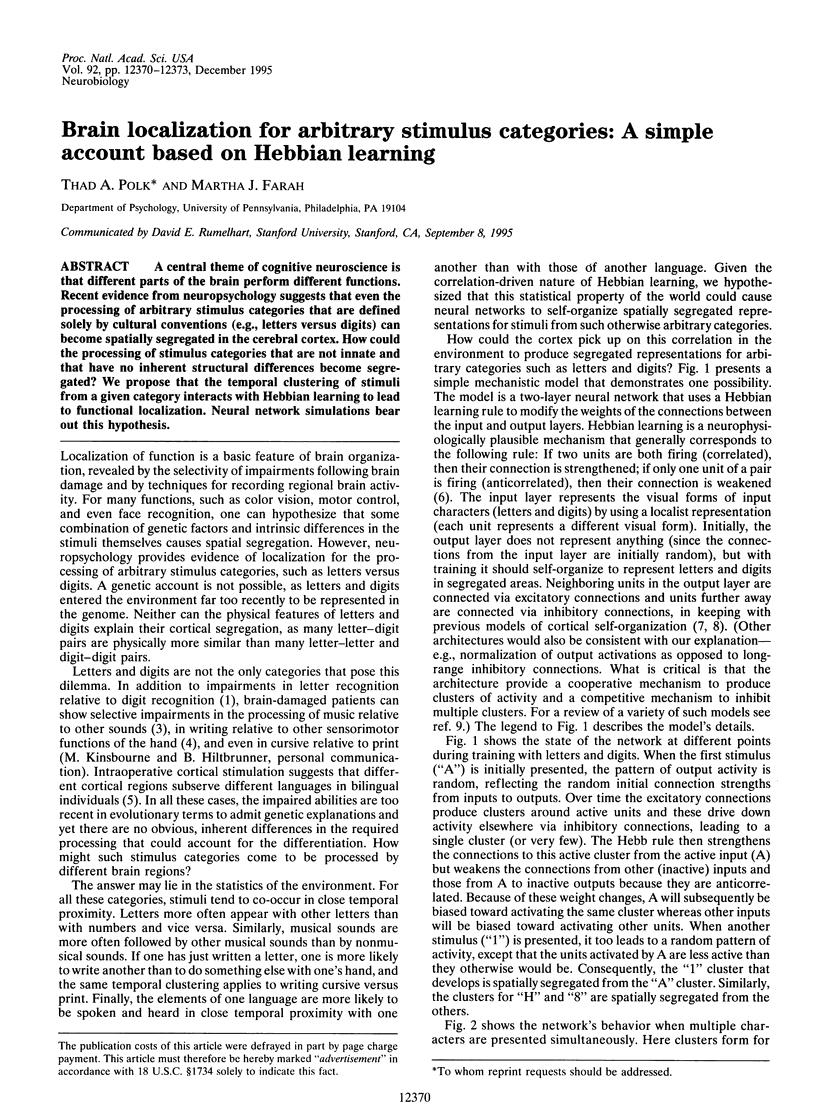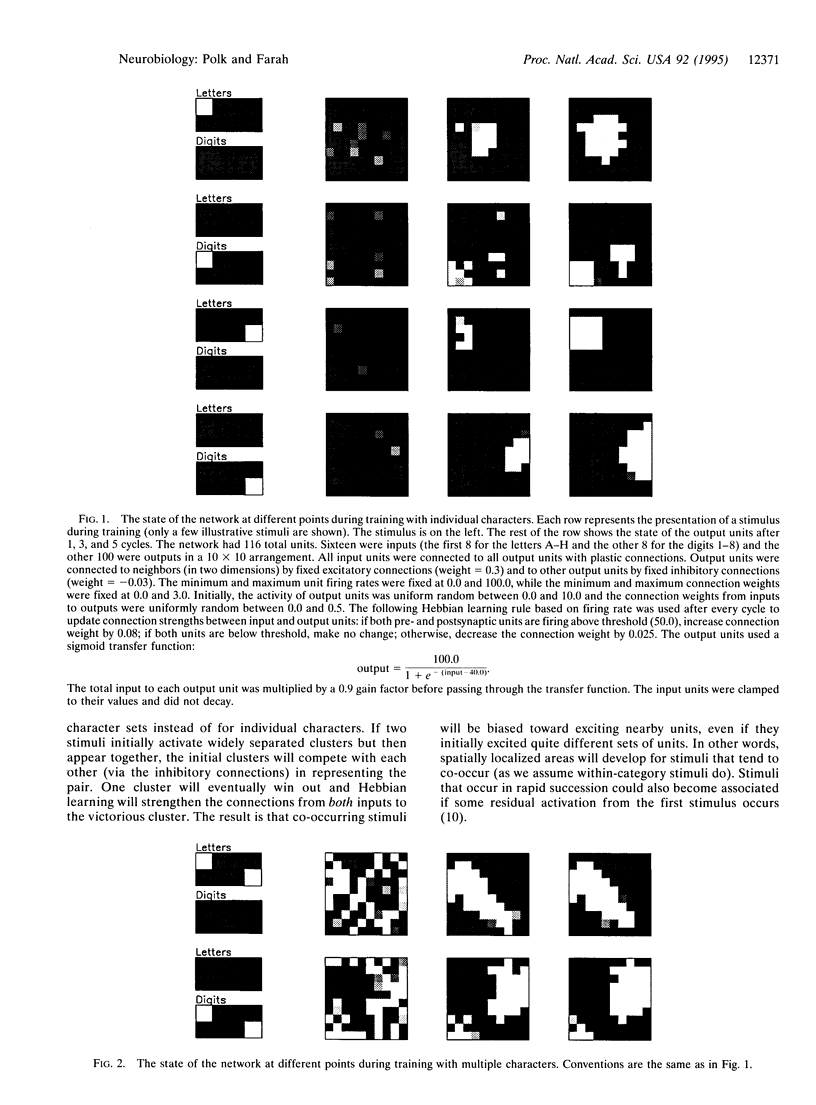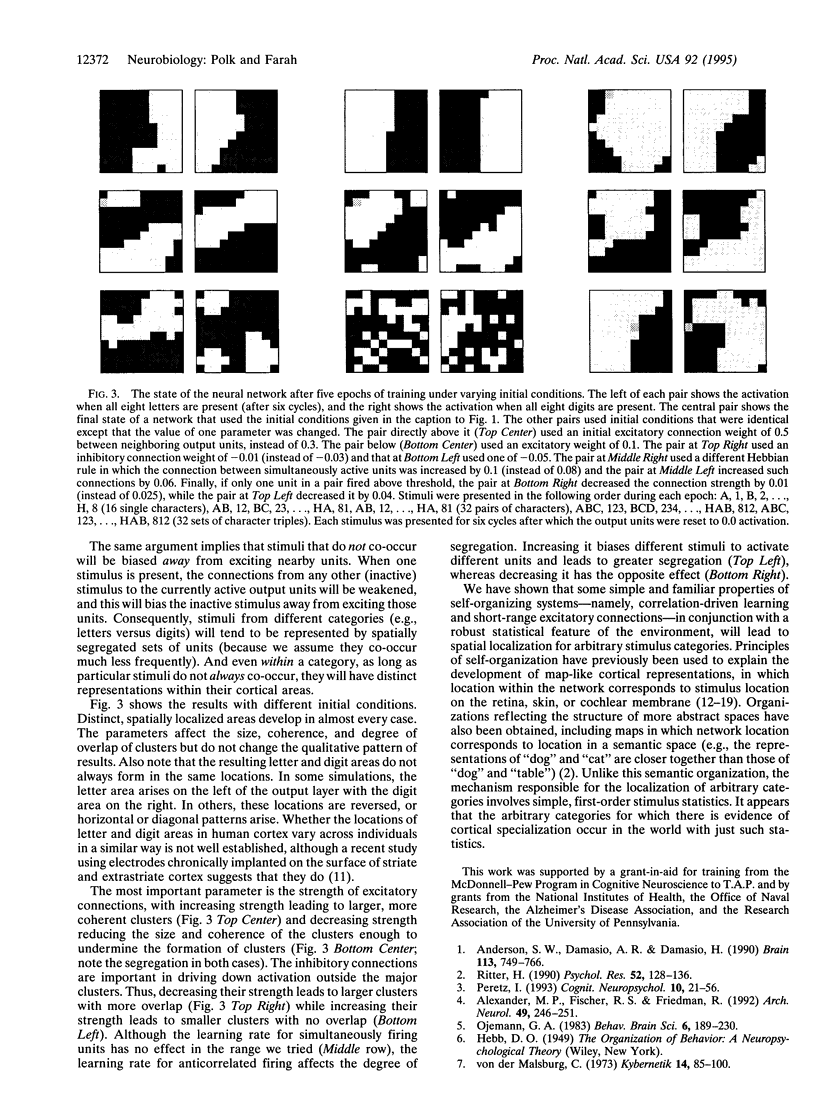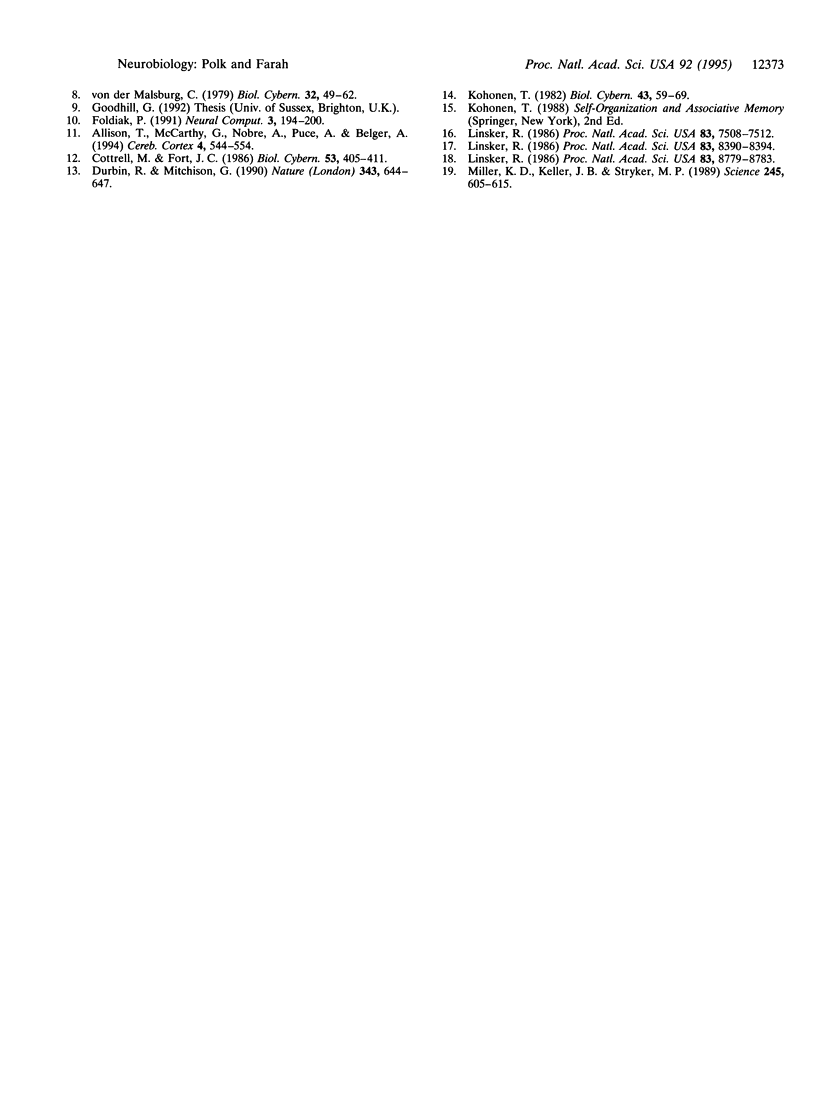Abstract
A central theme of cognitive neuroscience is that different parts of the brain perform different functions. Recent evidence from neuropsychology suggests that even the processing of arbitrary stimulus categories that are defined solely by cultural conventions (e.g., letters versus digits) can become spatially segregated in the cerebral cortex. How could the processing of stimulus categories that are not innate and that have no inherent structural differences become segregated? We propose that the temporal clustering of stimuli from a given category interacts with Hebbian learning to lead to functional localization. Neural network simulations bear out this hypothesis.
Full text
PDF



Selected References
These references are in PubMed. This may not be the complete list of references from this article.
- Alexander M. P., Fischer R. S., Friedman R. Lesion localization in apractic agraphia. Arch Neurol. 1992 Mar;49(3):246–251. doi: 10.1001/archneur.1992.00530270060019. [DOI] [PubMed] [Google Scholar]
- Allison T., McCarthy G., Nobre A., Puce A., Belger A. Human extrastriate visual cortex and the perception of faces, words, numbers, and colors. Cereb Cortex. 1994 Sep-Oct;4(5):544–554. doi: 10.1093/cercor/4.5.544. [DOI] [PubMed] [Google Scholar]
- Anderson S. W., Damasio A. R., Damasio H. Troubled letters but not numbers. Domain specific cognitive impairments following focal damage in frontal cortex. Brain. 1990 Jun;113(Pt 3):749–766. doi: 10.1093/brain/113.3.749. [DOI] [PubMed] [Google Scholar]
- Cottrell M., Fort J. C. A stochastic model of retinotopy: a self organizing process. Biol Cybern. 1986;53(6):405–411. doi: 10.1007/BF00318206. [DOI] [PubMed] [Google Scholar]
- Durbin R., Mitchison G. A dimension reduction framework for understanding cortical maps. Nature. 1990 Feb 15;343(6259):644–647. doi: 10.1038/343644a0. [DOI] [PubMed] [Google Scholar]
- Linsker R. From basic network principles to neural architecture: emergence of orientation columns. Proc Natl Acad Sci U S A. 1986 Nov;83(22):8779–8783. doi: 10.1073/pnas.83.22.8779. [DOI] [PMC free article] [PubMed] [Google Scholar]
- Linsker R. From basic network principles to neural architecture: emergence of orientation-selective cells. Proc Natl Acad Sci U S A. 1986 Nov;83(21):8390–8394. doi: 10.1073/pnas.83.21.8390. [DOI] [PMC free article] [PubMed] [Google Scholar]
- Linsker R. From basic network principles to neural architecture: emergence of spatial-opponent cells. Proc Natl Acad Sci U S A. 1986 Oct;83(19):7508–7512. doi: 10.1073/pnas.83.19.7508. [DOI] [PMC free article] [PubMed] [Google Scholar]
- Miller K. D., Keller J. B., Stryker M. P. Ocular dominance column development: analysis and simulation. Science. 1989 Aug 11;245(4918):605–615. doi: 10.1126/science.2762813. [DOI] [PubMed] [Google Scholar]
- Ritter H. Self-organizing maps for internal representations. Psychol Res. 1990;52(2-3):128–136. doi: 10.1007/BF00877520. [DOI] [PubMed] [Google Scholar]
- von der Malsburg C. Development of ocularity domains and growth behaviour of axon terminals. Biol Cybern. 1979 Feb 2;32(1):49–62. doi: 10.1007/BF00337452. [DOI] [PubMed] [Google Scholar]
- von der Malsburg C. Self-organization of orientation sensitive cells in the striate cortex. Kybernetik. 1973 Dec 31;14(2):85–100. doi: 10.1007/BF00288907. [DOI] [PubMed] [Google Scholar]


